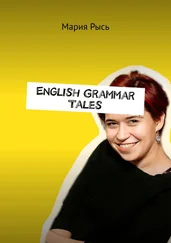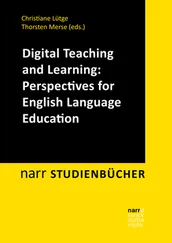As already mentioned in the introduction, this book goes one step further than the task-based varieties presented so far in that it sees grammar as standing side-by-side with the communicative topic of the lesson. Somewhat similar to ECKERTH’s view, one could even go so far as to say that the grammatical topic actually determines the communicative topic of the lesson, as the teacher, when planning the lesson, first of all has to know which grammatical structure s/he wants to introduce and then needs to find an everyday communicative situation in which the structure in question has to be used in the target language. This communicative situation then becomes the basis for creating a task for the learners. Of course, the other way around would work as well – if a teacher wants to introduce a certain communicative situation s/he may, as a second step, think about structures that normally occur in this situation and then decide on one structure that will form the grammatical focus of the lesson. This alternative way of planning a task-based lesson would, however, make grammatical progression somewhat more difficult, as the communicative topic would decide about the grammatical structure and grammar would again be seen rather as a by-product.
Summing up, the task-based teaching approach allows to promote grammar acquisition in a communicative setting in various ways. One can either hope for the learners’ grammar skills to develop during communication, or one can include specific grammar lessons (consciousness-raising tasks) in an otherwise purely communicative way of teaching, or else one can integrate grammar teaching and still focus on communication and on a task outcome. This latter perspective is the one taken by this book and is outlined by a number of examples in its second, more practically oriented part. The grammatical approach of choice is based on cognitive grammar and there are many good reasons for this choice, as is explained in the next chapter.
COOK, Vivian (2016 5): Second language learning and language teaching . Abingdon: Routledge.
COUNCIL OF EUROPE (2001): Common European framework of reference for languages: Learning, teaching, assessment . Cambridge: Cambridge University Press.
ECKERTH, Johannes (2008a): “Task-based learner-learner interaction”. In: ECKERTH, Johannes / SIEKMANN, Sabine (eds.): Task-based language learning and teaching: Theoretical, methodological and pedagogical perspectives . Frankfurt: Peter Lang, 89–115.
ECKERTH, Johannes (2008b): “Investigating consciousness-raising tasks: Pedagogically-targeted and non-targeted learning gains”. International Journal of Applied Linguistics 18 (2), 119–145.
ELLIS, Rod (2003): Task-based language learning and teaching . Oxford: Oxford University Press.
FOTOS, Sandra (1994): “Integrating grammar instruction and communicative language use through grammar consciousness-raising tasks”. TESOL Quarterly 28 (2), 323–351.
GUILLOTEAUX, Marie J./DÖRNYEI, Zoltán (2008): “Motivating language learners: A classroom-oriented investigation of the effects of motivational strategies on student motivation”. TESOL Quarterly 42 (1), 55–77.
KUMARAVADIVELU, B. (1993): “The name of the task and the task of naming: Methodological aspects of task-based pedagogy”. In: CROOKES, Graham / GASS, Susan M. (eds.): Tasks in a pedagogical context: Integrating theory and practice . Clevedon: Multilingual Matters, 69–96.
KUMARAVADIVELU, B. (2007): “Learner perception of learning tasks”. In: VAN DEN BRANDEN, Kris/VAN GORP, Koen / VERHELST, Machteld (eds.): Tasks in action: Task-based language education from a classroom-based perspective . Cambridge: Cambridge Scholars Publishing, 7–31.
LOSCHKY, Lester/BLEY-VROMAN, Robert (1993): “Grammar and task-based methodology”. In: CROOKES, Guy / GASS, Susan M. (eds.): Tasks and language learning: Integrating theory and practice . Clevedon: Multilingual Matters, 123–167.
MÜLLER-HARTMANN, Andreas/SCHOCKER-VON DITFURTH, Marita (2011): Teaching English: Task-supported language learning . Tübingen: UTB.
NORRIS, John M./ORTEGA, Lourdes (2000): “Effectiveness of L2 instruction: A research synthesis and quantitative meta-analysis”. Language Learning 30 (3), 417–528.
NUNAN, David (1989): Designing tasks for the communicative classroom . Cambridge: Cambridge University Press.
NUNAN, David (1998): Second language teaching and learning . Boston: Heinle & Heinle.
NUNAN, David (2015): Teaching English to speakers of other languages . London: Routledge.
PICA, Teresa/KANAGY, Ruth/FALODUN, Joseph (1993): “Choosing and using communication tasks for second language teaching and research”. In: CROOKES, Graham / GASS, Susan M. (eds.): Tasks and language learning: Integrating theory and practice . Clevedon: Multilingual Matters, 1–34.
PRABHU, N.S. (1987): Second language pedagogy . Oxford: Oxford University Press.
RICHARDS, Jack C./RODGERS, Theodore S. (2001): Approaches and methods in language teaching . Cambridge: Cambridge University Press.
ROBINSON, Peter (2011): “Task-based language learning: A review of issues”. Language Learning 61, Supplement 1, 1–36.
SAMUDA, Virginia/BYGATE, Martin (2008): Tasks in second language learning . London: Palgrave Macmillan.
SEEDHOUSE, Paul (1999): “Task-based interaction”. ELT JOURNAL 51/4, 336–344.
SKEHAN, Peter (1996): “A framework for the implementation of task-based instruction”. Applied Linguistics 17 (1), 38–62.
SKEHAN, Peter (1998): A cognitive approach to language learning . Oxford: Oxford University Press.
THORNBURY, Scott (2006): An A-Z of ELT . Oxford: Macmillan.
VAN DEN BRANDEN, Kris/BYGATE, Martin/NORRIS, John M. (2009): “Task-based language teaching: Introducing the reader”. In: VAN DEN BRANDEN, Kris/BYGATE, Martin/NORRIS, John M. (eds.): Task-based language learning: A reader . Amsterdam: Benjamins, 1–15.
WILLIS, Jane (1996): A framework for task-based learning . Harlow: Longman.
WILLIS, Dave/WILLIS, Jane (2007): Doing task-based teaching . Oxford: Oxford University Press.
Cognitive grammar is the grammar-oriented branch of a general language theory called cognitive linguistics, which started to develop in the 1980s in the USA and some years later also conquered other parts of the world (mainly Europe and Asia). The first sub-chapter focuses on the development and the insights of cognitive linguistics and explains the main differences between cognitive linguistics and other more traditional schools of linguistics. In the second sub-chapter, the perspective that cognitive grammar takes on language is introduced and some of its major tenets are briefly analysed, as cognitive grammar cannot be presented in its entirety here1. The third sub-chapter then presents arguments why a cognitive grammatical perspective is a suitable choice for pedagogical applications of grammar, the predominant reason being that it sees grammar as meaningful, and what is meaningful is also explainable. Furthermore, current research focusing on the effectiveness of using this approach in second/foreign language teaching is summarised and briefly explained.
3.1 The development of cognitive linguistics
There are a number of reasons why cognitive linguistics has developed, not the least of them being the dissatisfaction of certain linguists with the theory of generative grammar, mainly connected to the work by CHOMSKY, which was overwhelmingly popular in the 1970s and 1980s. The generative theory located the field of linguistics close to the natural sciences and gave syntax the highest priority, thus partly disregarding and also somewhat discriminating against semantics. In generative linguistics, grammar is seen as the set of principles by which a language works (cf. BROCCIAS 2006: 81). ‘The well-formed sentence’ and ‘the ideal speaker’ are important notions in generative grammar – the problem is just that in everyday life, there are hardly any ideal speakers using only well-formed sentences. Instead, language use is influenced by countless non-linguistic factors, among them the speech situation, the speaker’s intention, his/her educational, regional and social background, gender and age, culture, to name just a few of the numerous influences. Simplifying somewhat, generative linguistics tries to look at ‘language proper’, devoid of all the influence factors just mentioned, and at the linguistic system rather than at actual speech performance. It furthermore believes that language is not directly related to other cognitive faculties that humans possess, such as their experiences, their memory, their senses, their senso-motor systems, their vision as well as other factors related to cognition. The hypothesised language component in people’s brains is seen as autonomous and as rather independent of all the factors enumerated above.
Читать дальше












